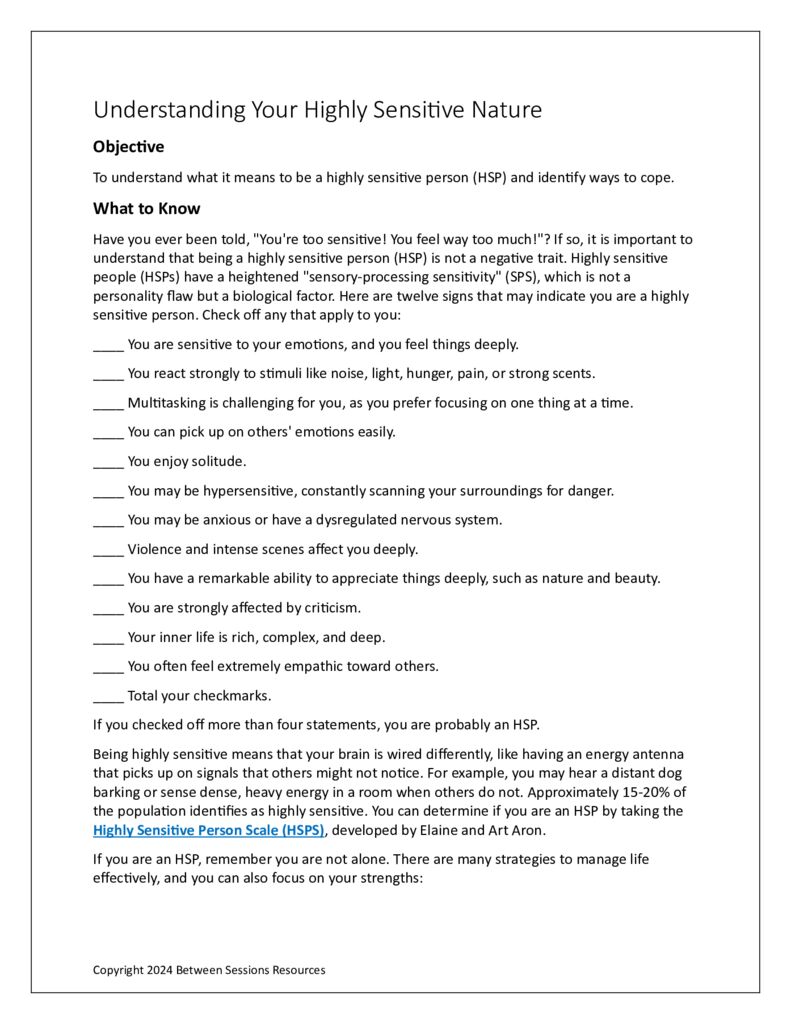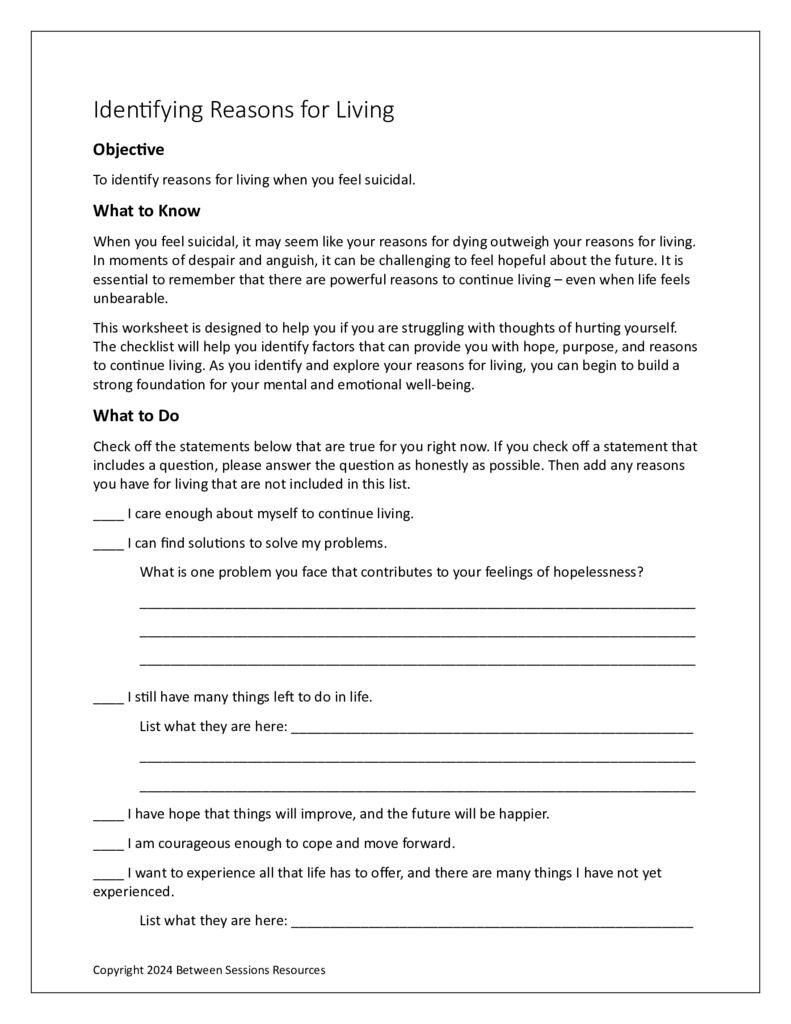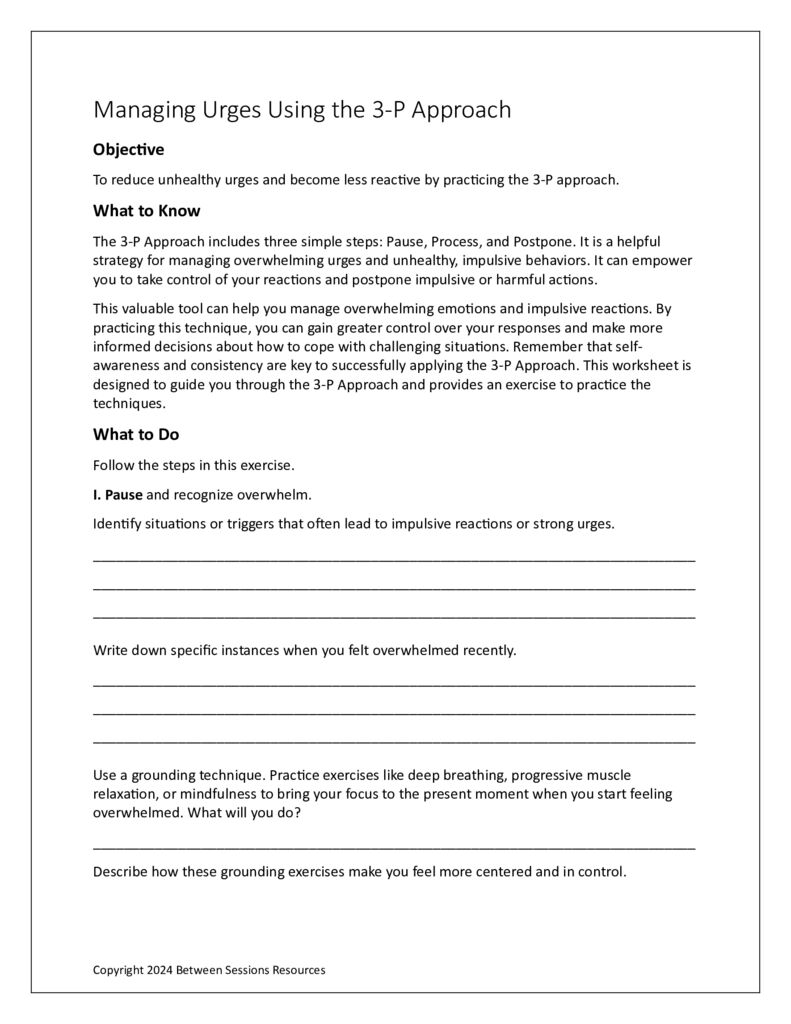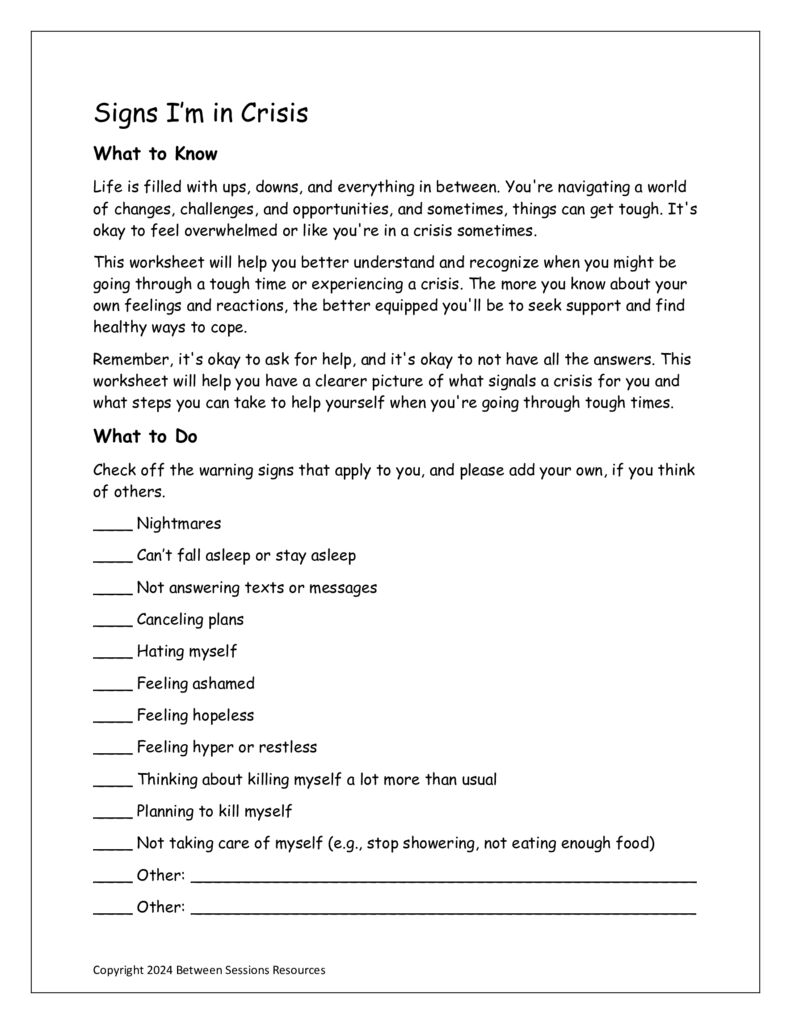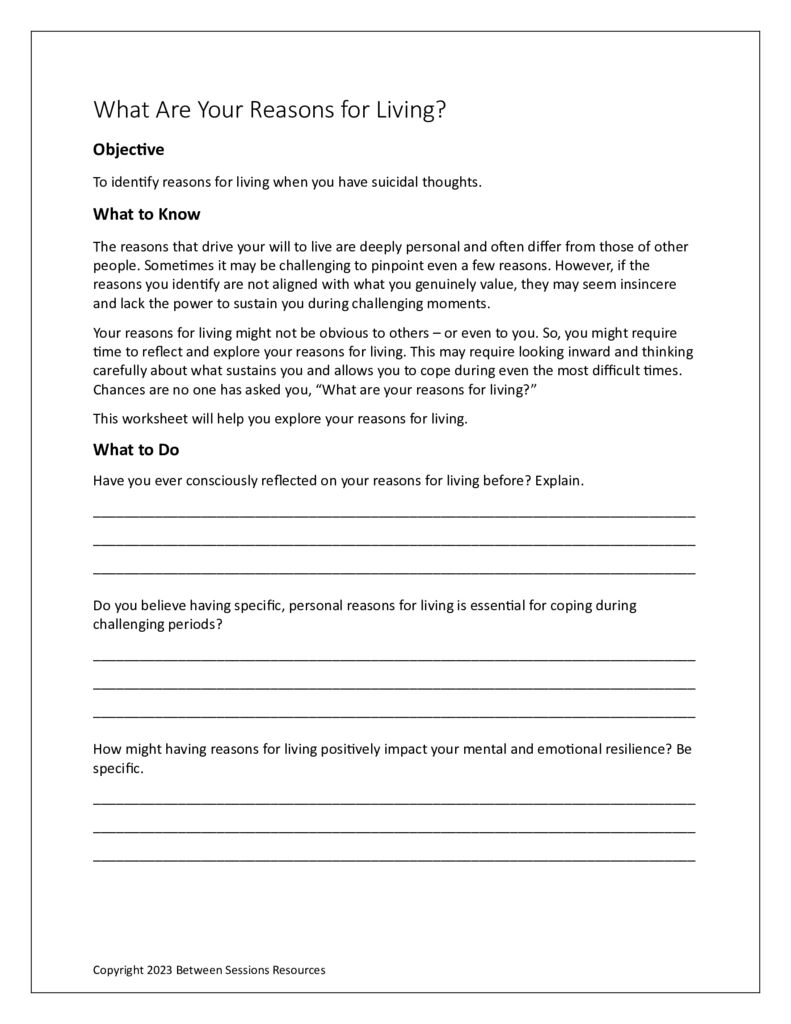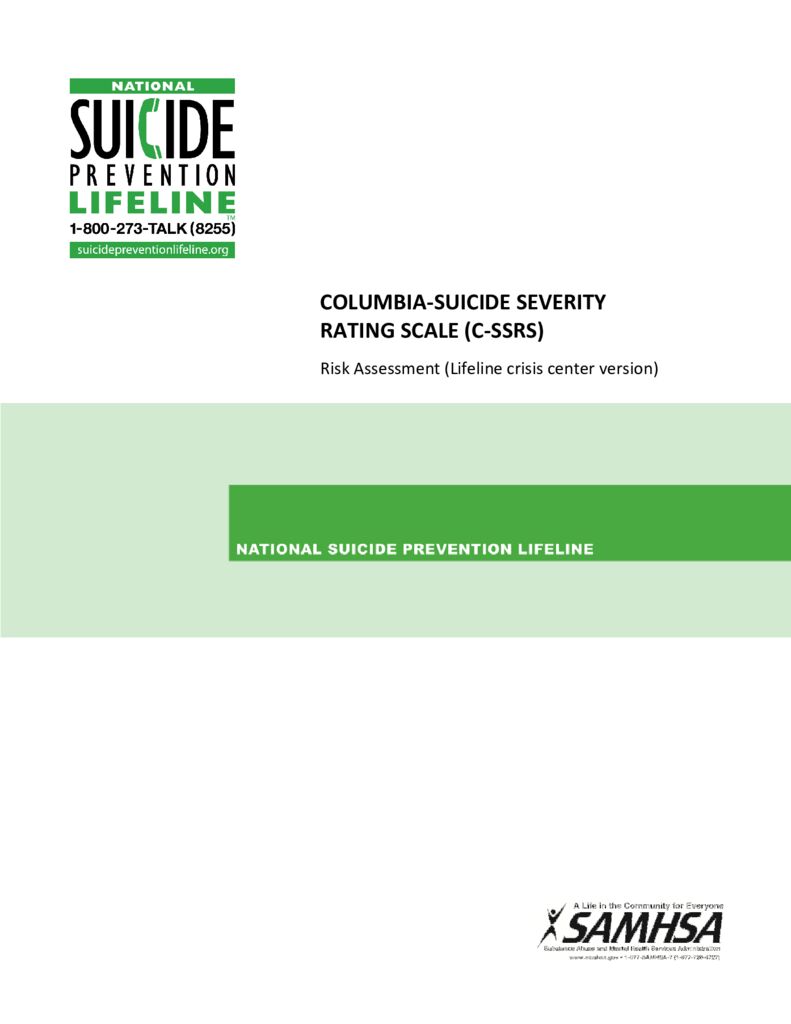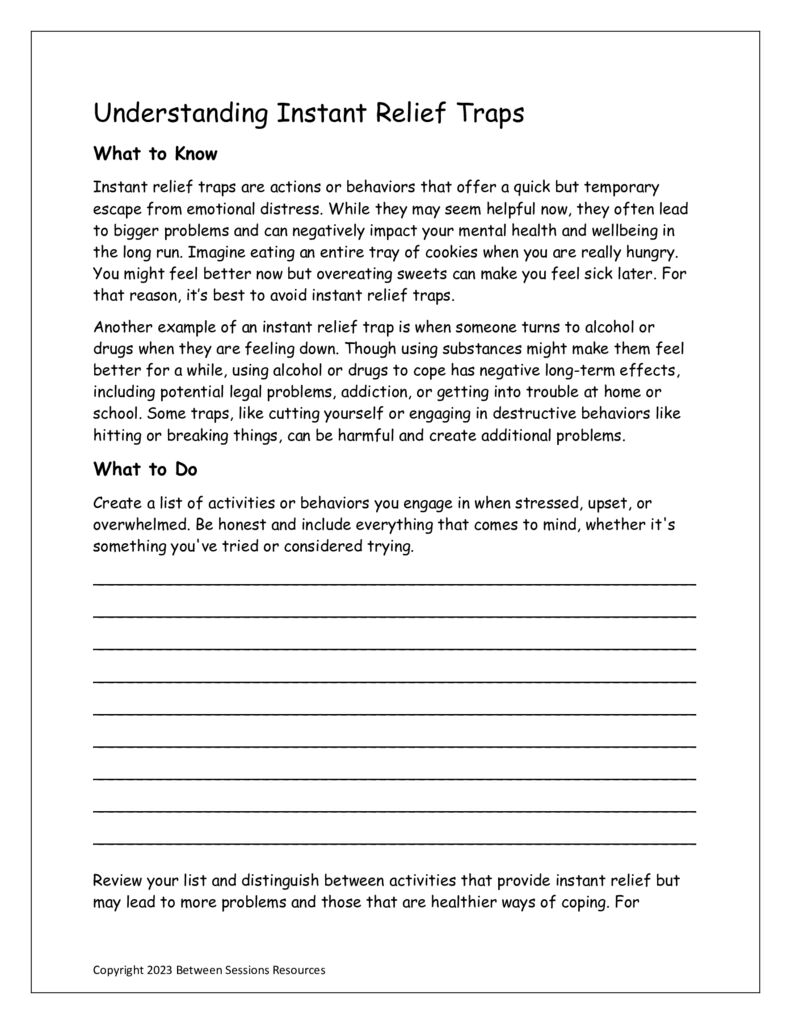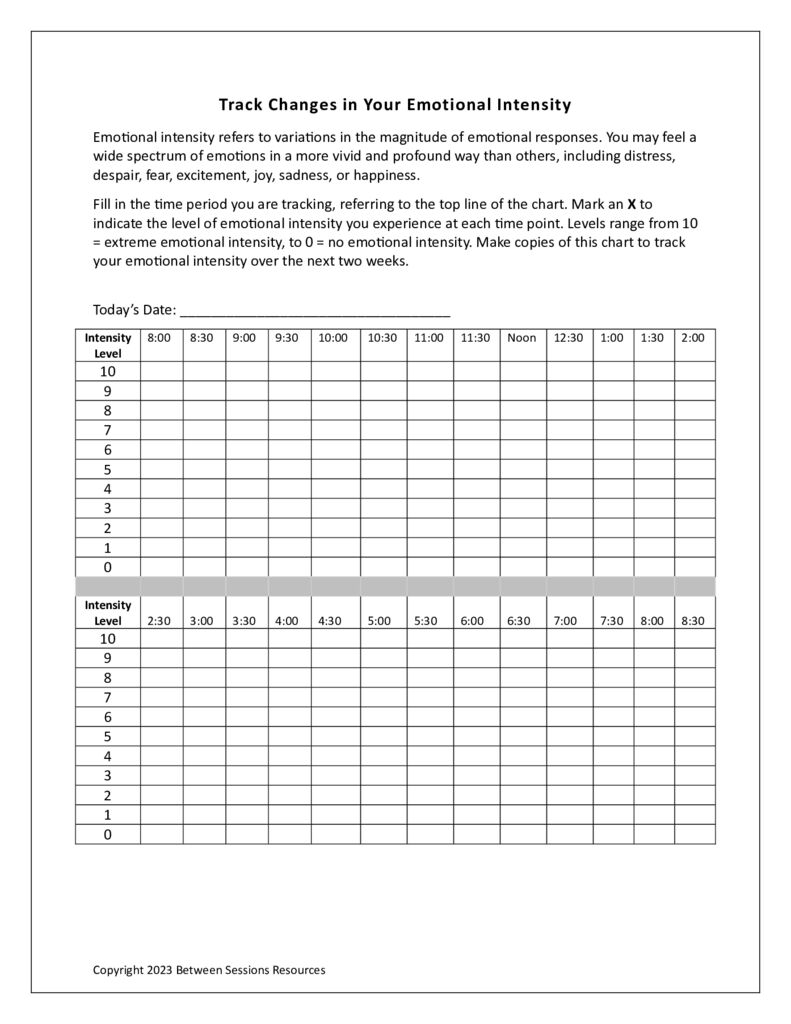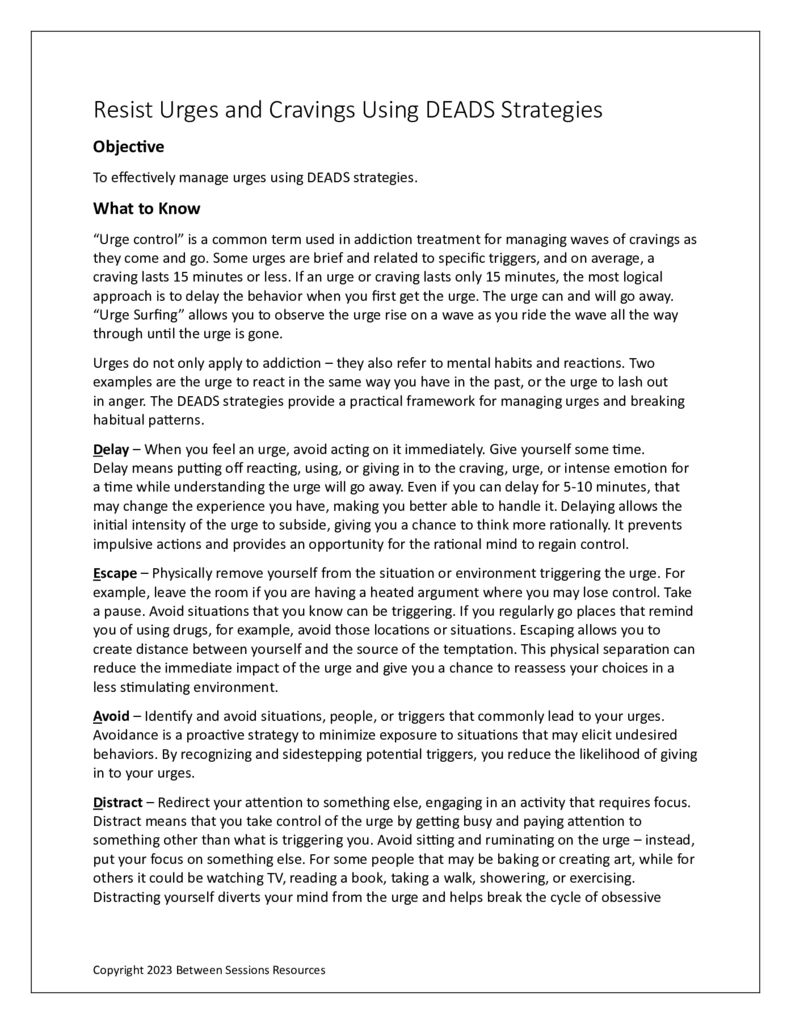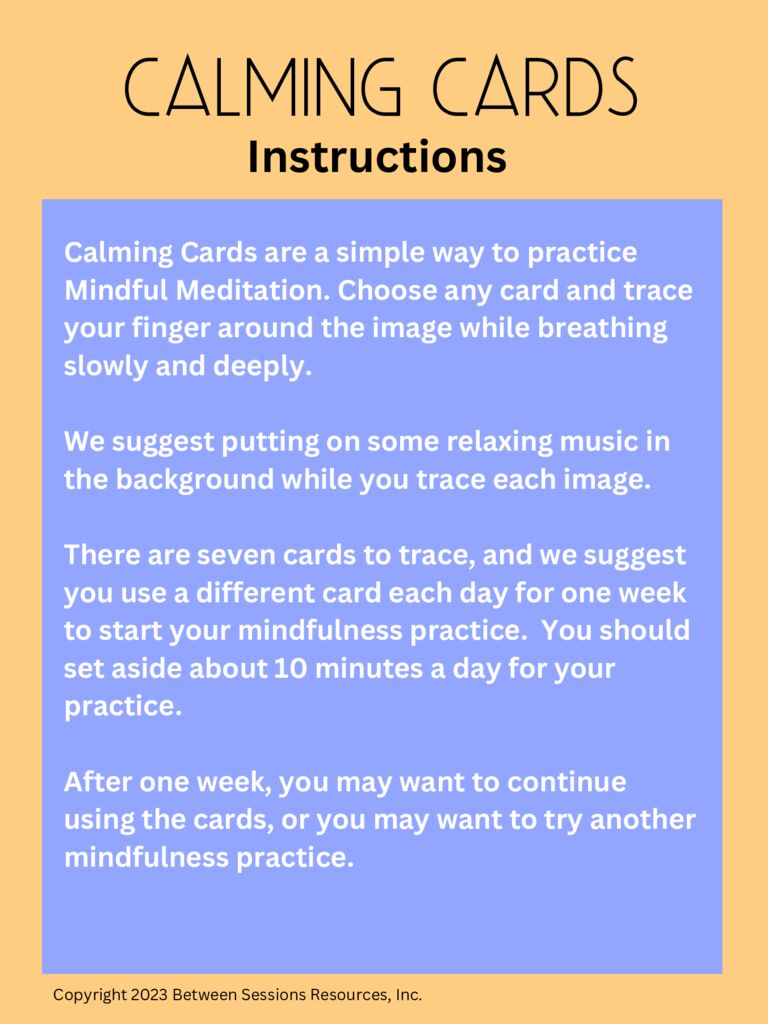Highly sensitive people (HSPs) have a heightened “sensory-processing sensitivity” (SPS), which is not a personality flaw but a biological factor. This worksheet includes a checklist to help people identify if they have this type of sensitivity and suggests exercises to help people understand themselves better. (0124. sensory processing, senses)
This worksheet is designed to help people struggling with thoughts of hurting themselves. It includes a checklist that will help them identify factors that can provide them with hope, purpose, and reasons to continue living. The worksheet includes questions to help people explore their reasons for living and guide them toward building a strong foundation for their emotional well-being. (0124, suicide prevention, suicidal ideation)
The 3-P Approach includes three simple steps: Pause, Process, and Postpone. It is a helpful strategy for managing overwhelming urges and unhealthy, impulsive behaviors. It can empower you to take control of your reactions and postpone impulsive or harmful actions. This worksheet gives people the opportunity to learn this technique and apply it their impulsive behavior. (0123, addiction, habit control, impulse control)
This worksheet is designed to help people identify signs that suggest they may be experiencing a crisis. The worksheet includes a checklist of symptoms as well as techniques that can help them deal with the acute stress. It concludes by asking people to identify friends or family who can help them get through this difficult period. (0124, depression, suicidal ideation, stress)
This worksheet is to help people who have had suicidal thoughts develop a different perspective on their lives. Questions ask people to think about their values, their goals, the people in their lives, and more. (1223, suicide prevention, suicidal ideation, depression)
This evidence-based scale is part of an international public health initiative involving the assessment of suicidality. Online training in administering the scale is recommended. The scale assesses factors like general clinical status, protective factors, actual attempts, intensity of ideation, and more. (1223, suicide, suicidality, suicide ideation, assessment)
Instant relief traps are actions or behaviors that offer a quick but temporary escape from emotional distress. This worksheet helps people think about behaviors they do for instant release and if they are helpful or hurtful to their physical and/or mental health.
This form is intended to be used by people who have intense often overwhelming emotions, such as anxiety, fear, sadness, or even euphoria. The tracking form will help the therapist teach and monitor emotional regulation skills. (1123. emotional regulation, bipolar, Bipolar Disorder)
The DEADS strategies provide a practical framework for managing urges and breaking habitual patterns. The acronym stands for delay, escape, avoid, distract, and substitute. This worksheet explains this technique and asks the user to keep track of his or her urges, the strategies used, and the results of using them. (1123. addiction, urges, impulse control)
There are seven Calming Cards, one for every day of the week. People are asked to practice Mindful Meditation by slowly tracing each image with a finger while practicing deep breathing. This is a simple technique that can be used to practice relaxation and mindfulness. (1023, mindfulness, meditation, relaxation, anxiety, sorry)

